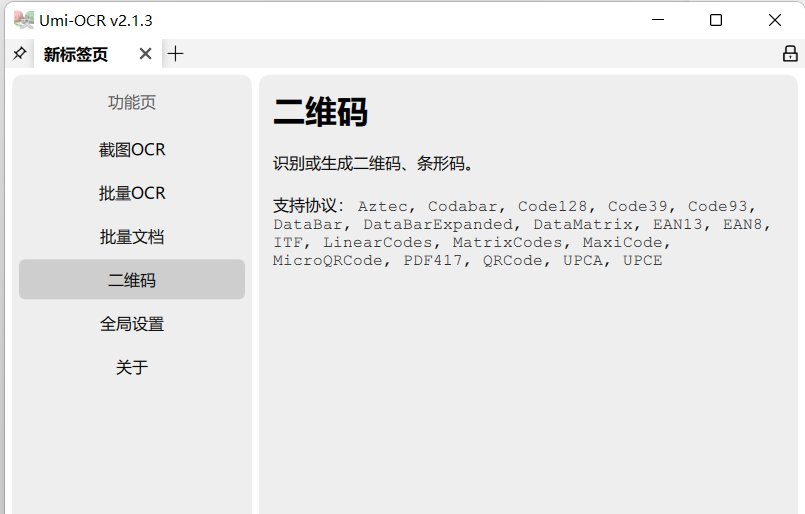个人主页:C++忠实粉丝
欢迎 点赞👍 收藏✨ 留言✉ 加关注💓本文由 C++忠实粉丝 原创C++list类介绍和常用接口说明(超全超详细)
收录于专栏【C++语法基础】
本专栏旨在分享学习C++的一点学习笔记,欢迎大家在评论区交流讨论💌
目录
1.list介绍
2.list的使用
2.1.list的构造
2.2.list iterator的使用
2.3.list capacity
2.4.list element access
2.5.list modifiers
2.6.list的迭代器失效
3.list与vector
1.list介绍
list 是 C++ 标准库中的一个双向链表容器,定义在 <list> 头文件中。它提供了动态大小、双向遍历、插入和删除操作的高效支持。
主要特点:
双向链表:每个元素都有指向前一个和后一个元素的指针,支持在链表的任意位置高效插入和删除操作。
非连续存储:与 vector 不同,list 的元素不在内存中连续存储。
支持迭代器:提供前向和后向迭代器,可以高效地进行元素访问和遍历。
常用操作:
push_back() 和 push_front():在链表的末尾或开头添加元素。
pop_back() 和 pop_front():删除链表的末尾或开头元素。
insert():在指定位置插入元素。
erase():删除指定位置的元素。
size() 和 empty():获取链表的大小和检查是否为空。
适用场景:
当需要频繁的插入和删除操作时,list 比 vector 更高效。
当不需要随机访问元素时,list 是一个合适的选择。

参考:list - C++ Reference
2.list的使用
list中的接口比较多,此处类似,只需要掌握如何正确的使用,然后再去深入研究背后的原理,已 达到可扩展的能力。以下为list中一些常见的重要接口。
2.1.list的构造
| 构造函数(constructor) | 接口说明 |
|---|---|
| list(size_type n, const value_type& val = value_type()) | 构造的list中包含n个值为val的元素 |
| list() | 构造空的list |
| list(const list& x) | 拷贝构造函数 |
| list(InputIteratr first, InputIterator last) | 用(first, last)区间中的元素构造list |
示例:
// list的构造
void TestList1()
{
list<int> l1; // 构造空的l1
list<int> l2(4, 100); // l2中放4个值为100的元素
list<int> l3(l2.begin(), l2.end()); // 用l2的[begin(), end())左闭右开的区间构造l3
list<int> l4(l3); // 用l3拷贝构造l4
}
int main()
{
TestList1();
return 0;
}

 参考:list::list - C++ Reference
参考:list::list - C++ Reference
2.2.list iterator的使用
此处,大家可暂时将迭代器理解成一个指针,该指针指向list中的某个节点。
| 函数声明 | 接口声明 |
|---|---|
| begin + end | 返回第一个元素的迭代器+返回最后一个元素的下一个位置的迭代器 |
| rbegin + rend | 返回第一个元素的reverse_iterator,即end位置,返回最后一个元素的下一个位置的reverse_iterator,即begin位置 |

【注意】
1. begin与end为正向迭代器,对迭代器执行++操作,迭代器向后移动
2. rbegin(end)与rend(begin)为反向迭代器,对迭代器执行++操作,迭代器向前移动
示例:
void TestList2()
{
// 以数组为迭代器区间构造l5
int array[] = { 16,2,77,29 };
list<int> l5(array, array + sizeof(array) / sizeof(int));
// 列表格式初始化C++11
list<int> l6{ 1,2,3,4,5 };
// 用迭代器方式打印l5中的元素
list<int>::iterator it = l5.begin();
while (it != l5.end())
{
cout << *it << " ";
++it;
}
cout << endl;
// C++11范围for的方式遍历
for (auto& e : l5)
cout << e << " ";
cout << endl;
for (auto e : l6)
cout << e << " ";
}
int main()
{
TestList2();
return 0;
}

// list迭代器的使用
// 注意:遍历链表只能用迭代器和范围for
void PrintList(const list<int>& l)
{
// 注意这里调用的是list的 begin() const,返回list的const_iterator对象
for (list<int>::const_iterator it = l.begin(); it != l.end(); ++it)
{
cout << *it << " ";
//*it = 10; //编译不通过(const)
}
cout << endl;
}
void TestList3()
{
int array[] = { 1, 2, 3, 4, 5, 6, 7, 8, 9, 0 };
list<int> l(array, array + sizeof(array) / sizeof(array[0]));
// 使用正向迭代器正向list中的元素
// list<int>::iterator it = l.begin(); // C++98中语法
auto it = l.begin(); // C++11之后推荐写法
while (it != l.end())
{
cout << *it << " ";
++it;
}
cout << endl;
// 使用反向迭代器逆向打印list中的元素
// list<int>::reverse_iterator rit = l.rbegin();
auto rit = l.rbegin();
while (rit != l.rend())
{
cout << *rit << " ";
++rit;
}
cout << endl;
}
int main()
{
TestList3();
return 0;
}

 参考:
参考:
list::begin - C++ Reference
list::end - C++ Reference
list::rbegin - C++ Reference
list::rend - C++ Reference
2.3.list capacity
| 函数声明 | 接口说明 |
|---|---|
| empty | 检测list是否为空,是返回true,否则返回false |
| size | 返回list中有效节点个数 |
void TestList4()
{
list<int> a1;
list<int> a2(100, 1);
list<int> a3(a2);
list<int> a4(a3.begin(), a3.end());
cout << a1.empty() << endl;
cout << a2.empty() << endl;
cout << a3.empty() << endl;
cout << a4.empty() << endl;
cout << a1.size() << endl;
cout << a2.size() << endl;
cout << a3.size() << endl;
cout << a4.size() << endl;
}
int main()
{
TestList4();
return 0;
} 

 参考:
参考:
list::empty - C++ Reference
list::size - C++ Reference
2.4.list element access
| 函数声明 | 接口说明 |
|---|---|
| front | 返回list的第一个节点中值的引用 |
| back | 返回list的最后一个节点中值的引用 |
#include <iostream>
#include <list>
using namespace std;
void TestList5()
{
list<int> a1{ 12, 90 };
a1.front() -= a1.back();
for (auto e : a1)
{
cout << e << endl;
}
}
int main()
{
TestList5();
return 0;
}



参考:
list::front - C++ Reference
list::back - C++ Reference
2.5.list modifiers
| 函数声明 | 接口说明 |
|---|---|
| push_front | 在list首元素前插入值为val的元素 |
| pop_front | 删除list中的第一个元素 |
| push_back | 在list尾部插入值为val的元素 |
| pop_back | 删除list中最后一个元素 |
| insert | 在list position位置中插入值为val的元素 |
| erase | 删除list position位置的元素 |
| swap | 交换两个list中的元素 |
| clear | 清空list中的有效元素 |
#include <iostream>
#include <list>
#include <vector>
using namespace std;
// list迭代器的使用
// 注意:遍历链表只能用迭代器和范围for
void PrintList(const list<int>& l)
{
// 注意这里调用的是list的 begin() const,返回list的const_iterator对象
for (list<int>::const_iterator it = l.begin(); it != l.end(); ++it)
{
cout << *it << " ";
//*it = 10; //编译不通过(const)
}
cout << endl;
}
// insert /erase
void TestList6()
{
int array1[] = { 1, 2, 3 };
list<int> L(array1, array1 + sizeof(array1) / sizeof(array1[0]));
// 获取链表中第二个节点
auto pos = ++L.begin();
cout << *pos << endl;
// 在pos前插入值为4的元素
L.insert(pos, 4);
PrintList(L);
// 在pos前插入5个值为5的元素
L.insert(pos, 5, 5);
PrintList(L);
// 在pos前插入[v.begin(), v.end)区间中的元素
vector<int> v{ 7, 8, 9 };
L.insert(pos, v.begin(), v.end());
PrintList(L);
// 删除pos位置上的元素
L.erase(pos);
PrintList(L);
// 删除list中[begin, end)区间中的元素,即删除list中的所有元素
L.erase(L.begin(), L.end());
PrintList(L);
}
int main()
{
TestList6();
return 0;
}
// list迭代器的使用
// 注意:遍历链表只能用迭代器和范围for
void PrintList(const list<int>& l)
{
// 注意这里调用的是list的 begin() const,返回list的const_iterator对象
for (list<int>::const_iterator it = l.begin(); it != l.end(); ++it)
{
cout << *it << " ";
//*it = 10; //编译不通过(const)
}
cout << endl;
}
// resize/swap/clear
void TestList7()
{
// 用数组来构造list
int array1[] = { 1, 2, 3 };
list<int> l1(array1, array1 + sizeof(array1) / sizeof(array1[0]));
PrintList(l1);
// 交换l1和l2中的元素
list<int> l2;
l1.swap(l2);
PrintList(l1);
PrintList(l2);
// 将l2中的元素清空
l2.clear();
cout << l2.size() << endl;
}
int main()
{
TestList7();
return 0;
} 参考:
参考:
list::push_front - C++ Reference
list::pop_front - C++ Reference
list::push_back - C++ Reference
list::pop_back - C++ Reference
list::insert - C++ Reference
list::erase - C++ Reference
list::swap - C++ Reference
list::clear - C++ Reference
2.6.list的迭代器失效
前面说过,此处大家可将迭代器暂时理解成类似于指针,迭代器失效即迭代器所指向的节点的无 效,即该节点被删除了。因为list的底层结构为带头结点的双向循环链表,因此在list中进行插入时是不会导致list的迭代器失效的,只有在删除时才会失效,并且失效的只是指向被删除节点的迭代器,其他迭代器不会受到影响。
void TestListIterator1()
{
int array[] = { 1, 2, 3, 4, 5, 6, 7, 8, 9, 0 };
list<int> l(array, array + sizeof(array) / sizeof(array[0]));
auto it = l.begin();
while (it != l.end())
{
// erase()函数执行后,it所指向的节点已被删除,因此it无效,在下一次使用it时,必须先给其赋值
l.erase(it);
++it;
}
}
// 改正
void TestListIterator()
{
int array[] = { 1, 2, 3, 4, 5, 6, 7, 8, 9, 0 };
list<int> l(array, array + sizeof(array) / sizeof(array[0]));
auto it = l.begin();
while (it != l.end())
{
l.erase(it++); // it = l.erase(it);
}
}
int main()
{
TestListIterator1();
return 0;
}
3.list与vector
vector与list都是STL中非常重要的序列式容器,由于两个容器的底层结构不同,导致其特性以及应用场景不同,其主要不同如下:
| vector | list | |
|---|---|---|
| 底层结构 | 动态顺序表,一段连续空间 | 带头节点的双向循环链表 |
| 随机访问 | 支持随机访问,访问某个元素效率O(1) | 不支持随机访问,某个元素效率O(N) |
| 插入和删除 | 任意位置插入和删除效率低,需要搬移元素,时间复杂度O(N),插入时可能需要增容: 开辟新的空间,拷贝元素,释放久空间,导致效率更低 | 任意位置插入和删除效率高,不需要搬移元素,时间复杂度为O(1) |
| 空间利用率 | 底层为连续空间,不容易造成内存碎片,空间利用率高,缓存利用率高 | 底层节点动态开辟,小节点容易造成内存碎片,空间利用率低,缓存利用率低 |
| 迭代器失效 | 在插入元素时,要给所有的迭代器重新赋值,因为插入元素有可能会导致重新扩容,致使原来迭代器失效,删除时,当前迭代器需要重新赋值否则会失效 | 插入元素不会导致迭代器失效,删除元素时,只是导致当前迭代器失效,其他迭代器不受影响 |
| 迭代器 | 原生态指针 | 对原生态指针(节点指针)进行封装 |
| 使用场景 | 需要高效存储,支持随机访问,不关心插入删除效率 | 大量插入和删除操作,不关心随机访问 |



















